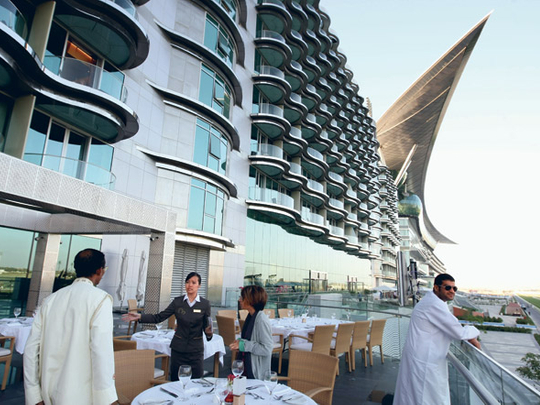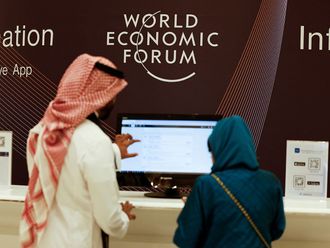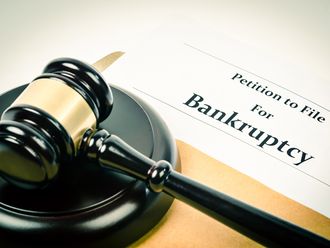
Dubai: Along with Paris, London, Moscow, Tokyo, Hong Kong, Shanghai and New York, Dubai was well-placed as a luxury tourism destination. However, the recession hit the niche market hard, causing a drop in consumer spending and confidence.
Dubai companies catering to the luxury tourism market suffered a slump in business of 30 to 40 per cent.
However, with the first quarter of 2010 finished, experts say there are tentative signs of recovery.
"There was definitely a slump in the market in 2009 and prices had to be adjusted to suit market needs. But there are signs now that the market is on a path to recovery," said Andrey Shevchenko, general manager of Aurora Yachts and Boats Trading, a company that sells and charters yachts to tourists.
As the big spenders become more conservative in their holiday outlays, Izzat Rustom, managing director of Dubai Exotic Limo, believes that there will always be customers willing to pay for luxury services.
Conservative spending
"You're not going to change your lifestyle if there is a crisis. But you'll maybe become more conservative over the spending. Instead of hiring a yacht for a full day you charter it for three hours. Instead of hiring a limo for a whole day, they hire it for a few hours," Rustom said.
During the downturn, it was the luxury hotel segment that suffered the most.
In 2009 there was an average occupancy drop of 69.4 per cent across the board, according to the Dubai Department of Tourism and Commerce Marketing (DTCM), a far cry from 2007 when hotels were enjoying full occupancy.
"[At the height of the economic boom] We were rejecting 10-30 per cent of clients because there were no rooms available at the hotels that were requested. For example, when the 1,600 room Atlantis hotel opened, there was full occupancy," said Gassan Aridi, managing director of Alpha Tours.
Since the downturn hit the region, hoteliers have been forced to resort to promotions, loyalty bonuses and cuts in room rates to attract a steady flow of clients.
The number of hotel rooms also increased by 22 per cent in 2009, from 50,457 rooms in 2008 to 61,487, thus reducing occupancy ratios.
"There were drops in the rates at the beginning of 2009, sending a message to the world that Dubai was an affordable luxury destination," Aridi said.
Things started to look up at the beginning of 2010 as occupancy rates started to increase.
"During the first quarter of 2010 hotels are starting to pick up and are looking more like the golden times in 2007.
"During the first quarter of 2010 high-end hotels recorded an occupancy of over 92 per cent," Aridi said.
The GCC — with Kuwait, the UAE and Qatar in particular — is placed in the top ten among high holiday spenders, according to Euromonitor.
Many residents spend a few months away from home in the summer to avoid the heat, boosting average spending rates.
The UAE alone spends on average $1,422 (Dh5,222) per departure.
Along with the GCC and European markets, Aridi also reported an increasing number of Chinese tourists who currently rate as the top guests of the Burj Al Arab.
Emerging markets such as South America and India are also experiencing a rising number of tourists coming to Dubai.
"Europe is the highest — around 65 per cent, then the GCC and then the others," Aridi said.
Didier Tourneboeuf, general manager of Anantara Qasr Al Sarab, reported an increase in guests from key markets such as the United Kingdom, Germany, Switzerland, France and Russia.
"In terms of occupancy 85 per cent is the percentage of customers coming from the GCC, 2 per cent from France, 1 per cent Germany and 2 per cent from the United States," Tourneboeuf said.
Along with hotel occupancy, luxury services also saw a 30 per cent drop. However, according to Aridi, this year has shown that the market is getting back on track with an increase of 20 to 25 per cent in the first quarter of 2010.
"I predict this will continue in an upward trend. There is still a demand for luxury products such as yachting, helicopters, private tours for shopping and sightseeing," Aridi said.
Tailor-made options
Aridi says the most popular luxury services are bespoke, tailor-made options.
"We always have to find something interesting and new for them to do," he said.
"More and more people nowadays, especially people who are well travelled, are more environmental-conscious and looking for more authenticity," said Tourneboeuf, whose resorts on Sir Bani Yas Island and in Liwa Desert concentrate on promoting the local culture and heritage.
As the luxury tourism market in Dubai gets back on track, Abu Dhabi is also making a name for itself as a tourist destination.
"In the past two years, there have been more tourists choosing to stay in Abu Dhabi. The city is becoming very tourism driven now with good products and hotels. I see a very big future for tourism there," Aridi said.
- 7.58m: number of people who visited Dubai in 2009
- 6,487: holiday apartments and hotels in Dubai in 2009
- 1%: annual growth in numbers of visitors to Dubai in 2009
Source: The Dubai Department of Tourism and Commerce Marketing












